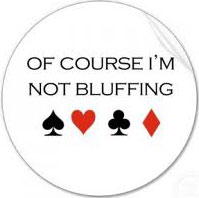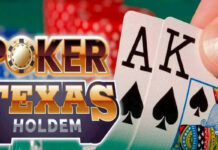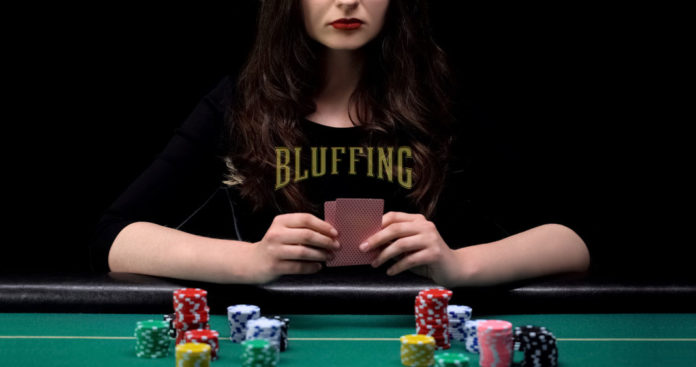Although "Bluff" translated from English as "cheating", the question of how to bluff in poker worries beginners literally after the first hand. It is this "trick" that makes poker so interesting and exciting. If you rely solely on cards and lucky combinations, then poker becomes unpredictable and uncontrollable. If you rely only on mathematics - very boring and pragmatic. The ability to bluff adds a share of interest and sports excitement. And we will tell you about the nuances and features of this process.
What is a bluff?
Do not confuse bluffing with simple poker cheating. This is much more difficult. It's believed that bluff - This is a tactical technique in poker, which consists in convincing the opponent that you have this or that combination (or lack thereof). In most cases, the main purpose of bluffing is to get everyone to fold and get out of the game. By using bluff, it is more profitable for the poker player to avoid the showdown stage, at which the very deception can be revealed.
The player bluffs with bets, conversations (sometimes) and facial expressions. Real masters use gestures and facial expressions, trying to influence the subconscious of rivals, to induce confidence or lack of confidence in their hands. Below we will tell you about the types of bluffing and their features.
Types of bluffs
In theory, there are two types of bluffing:

- Clean. The difference is that in this case, from the point of view of poker mathematics, you have no chance of winning the hand. This means that there are no draws, no gutshots, and even a pair (if we are talking about Hold'em) on the hands. Regardless of what the outs are, you have already lost the hand and cannot rely on a potentially good hand.
- Semi-bluff. It differs in that, theoretically, the poker player has chances of successfully completing the hand, but they are relatively small. Semi-bluffing will win even if your opponent used the same example. In a semi-bluff, as opposed to a clean bluff, you can take your pot even at showdown.
Separately highlight the concept blackfetcher... This is a situation where you bluff relying not only on your cards, but also look at the behavior of other players. If you see that your opponent is bluffing too, you can beat him even with a pure bluff. Blackfetcher is a real poker skill available only to professionals.
In addition to this classification, bluffs can be divided according to the game situation (preflop steal, resteal, squeeze, 3bet, etc.).
When to bluff?
In poker theory, there is a certain set of situations in which bluffing is considered a relatively favorable decision for the overall outcome of the game and your bankroll:
- There are relatively few players at the table... This will make it much easier for you to knock out opponents and prevent them from reaching showdown.
- Maroon cards give opponents the opportunity to assume that one of the opponents has a good out to collect a strong hand.
- What you did before bluffingwas aggressive and tight (this way you will be consistent when bluffing).
- Your rivals small pot odds.
- Against you not just aggressors are playingbut also tight opponents who correctly distribute the bankroll and calculate equity.

There are several rules to bluffing. First, you shouldn't forget about pot odds. This is important because a pure bluff does not always bring the desired result. Poker math comes in handy here too. Second, You should not just bluff for the sake of bluffing, but play a specific playing combination and react to the outs accordingly - correctly made bets and raises will help maintain this sequence. Do not play bluffs with players who do not save their bankroll and play aggressively and loosely at all times. Statistical software will help to identify such opponents.
Unfortunately, learning how to bluff in poker will take your entire playing career - we've only covered the initial stages of mastering this skill.


















